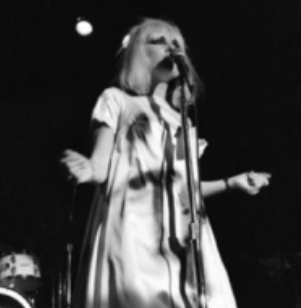 The Downtown Pop Underground
The Downtown Pop Underground
by Kembrew McLeod
Abrams Press. 361 pages, $27.
THERE ARE several strands running through Kembrew McLeod’s tumultuous history of the art scene in lower Manhattan from the 1960s to the late ’70s—a scene that McLeod believes has had an outsize influence on American and global culture. He starts with the mostly gay playwrights who got their first plays performed at a coffeehouse in the West Village called Caffe Cino, segues to Andy Warhol’s movies, underground publications like Fuck You / A Magazine of the Arts, the new technology of the video camera, television, and finally the rise of punk rock. But the gay playwrights who started out on Cornelia Street at Caffe Cino are the most fascinating.
Caffe Cino flourished at a time when there were still Italians in Little Italy, when women leaned on pillows on their windowsills to watch what was going on in the street below, when people threw their keys down to the pavement to let visitors in, when homeless men on the Bowery set trash cans on fire in winter to stay warm (and sometimes expired on the sidewalk), and glitter was crucial to drag queens and theater. It was a time when New York was on the skids, and rent was very cheap—though not cheap enough for playwright Harry Koutoukas, who would, when bills arrived that he couldn’t pay, stamp deceased on them and send them back.
Several of the Caffe Cino playwrights—William Hoffman, Lanford Wilson, Robert Patrick, Harvey Fierstein—went on to achieve success on Broadway. Tom O’Horgan had a huge hit directing the musical Hair. But when they were just starting out, what they were doing really resembled one of those Judy Garland–Mickey Rooney musicals in which a bunch of kids decide to put on a play—not in a barn, in this case, but at a coffeehouse run by a gay man named Joe Cino. This is where Lanford Wilson’s The Madness of Lady Bright was first produced, and Robert Patrick’s The Haunted Host. Both plays star loquacious queens in their apartments—the first going mad, the second entertaining an innocent caller. Sometimes the settings were more grandiose. Harry Koutoukas’ Tidy Passions, for example, opened with a one-line homage to Allen Ginsberg’s Howl: “I have seen the best cobras of my generation die mad—from lack of worship. … Ancient temple music UP.”
These plays were put on not only in the Caffe Cino, but also in places like the Mercer Arts Center (until the derelict hotel adjacent to it collapsed), the Judson Memorial Church, and La Mama—all of which became what was called “Off-Off Broadway.” They were all done with very little in the way of theatrical production values; in fact, an amateurish tone was key. (Script directions for Tidy Passions: “It is vital that no part of the setting or costumes be bought, the designer of the costumes and sets must spin them of remnants and castaway items.”) And they all had campy titles like Women Behind Bars, The Vicissitudes of the Damned, Miss Nefertiti Regrets, Journey to the Center of Uranus, Conquest of the Universe, In Search of the Cobra Jewels, Cock-Strong, and, my favorite for some reason, Too Late for Yogurt.Andrew Holleran’s fiction includes Dancer from the Dance, Grief, and The Beauty of Men.







